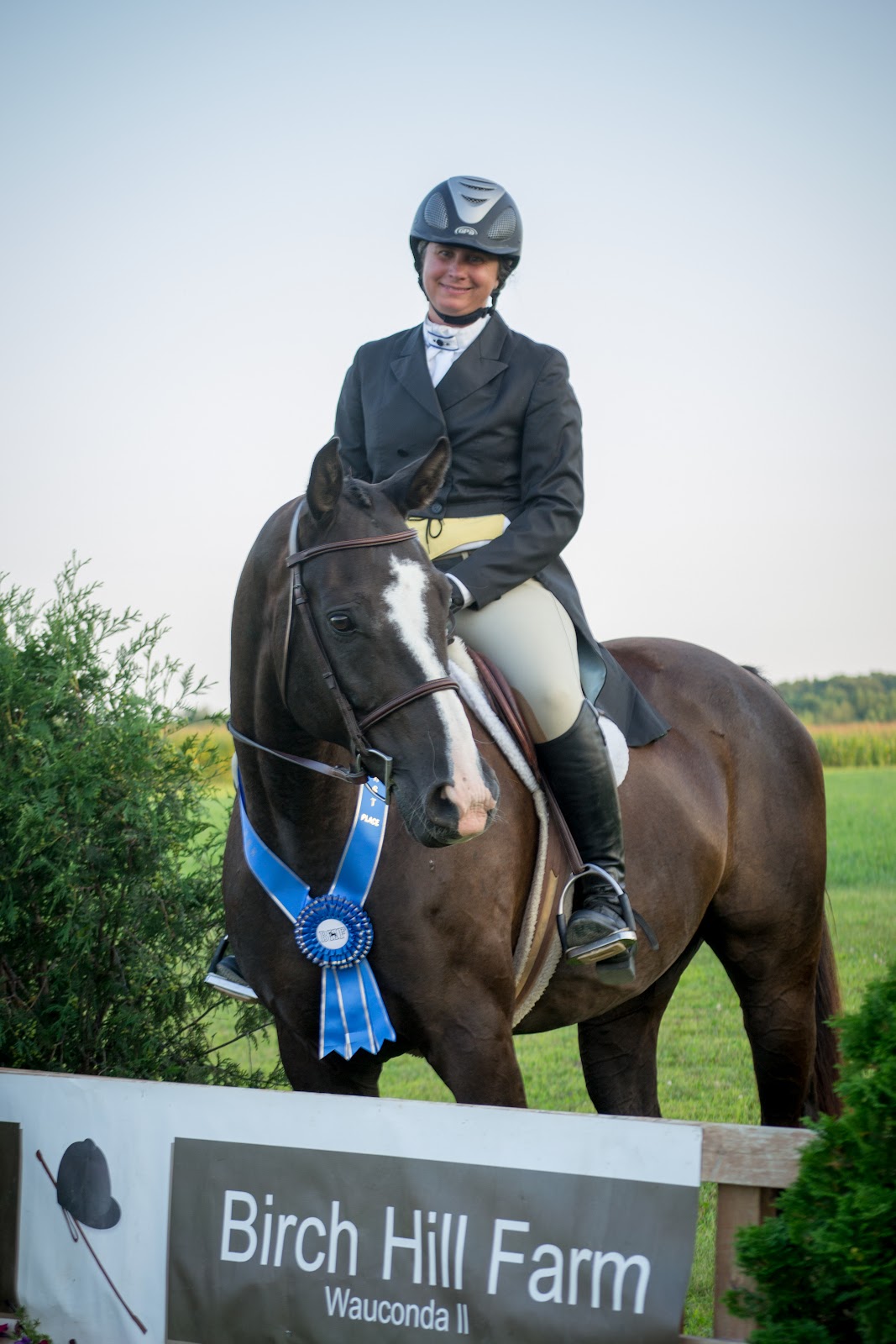The All-Rounder Andi Bill

As a young lady entering Mount Holyoke College, Andi Bill was one of the first people I met. At the time, Andi was the assistant coach of the collegiate Hunt Seat Team. Andi had a knack at making all of us newbies feel welcome, patiently answering all of our questions with a kind smile. As a coach she was firm, but fun, and her love of horses was evident above all else. Andi is an accomplished engineer, but has never let her passion for horses, and teaching riding take a back burner.
Tell us about your “horse history”
 |
| Andi began her horseback riding career at a young age |
I have been riding my whole life! My mom rode when she was pregnant with me. I started showing competitively when I was seven. I competed at Pony Finals every year from 1986 through 1995. I continued to ride as a junior, competing in the 3’6” equitation and junior hunters always showing and learning.
 |
| Andi loved horses from as far back as she can remember |
I attended Mount Holyoke College, competing as an intercollegiate equestrian and serving as captain of Mount Holyoke’s IHSA (Intercollegiate Horse Show Association) team my junior and senior years. I rode as an alternate on the United States Intercollegiate Team in Luxembourg and Malmo, Sweden, and was chef d’equipe for the winning American team in 1999. The IHSA provided a welcoming horse community of riders of diverse backgrounds and experience levels. It was at Mount Holyoke that I discovered that I enjoyed teaching just as much as I enjoyed riding.
Tell us about your riding and teaching philosophies
I like to keep it simple. The four P’s:) Posture, Pace, Path, and Patience! I am a stickler for position; correct equitation allows the rider to effortlessly stay in balance with their horse and communicate as effectively as possible with their equine partner. Developing pace and planning your path are key to a successful ride and I focus on this with all of my riders. Finally, patience: have patience with your horse, patience with others, and patience with yourself. Slow down and recognize that errors provide the best opportunities for learning and improvement. Understand that learning and improving takes time!
 |
| Andi is just as passionate about teaching as she is about riding |
I also think that a well-rounded equestrian education is essential. It is important for riders to understand and experience different disciplines. There is so much to learn, and the more we know, the better horse people we can be. Every experience with horses is unique, and being able to draw from a variety of approaches allows us to better engage with each experience.
Tell us about what you are currently doing
Tell us about what you are currently doing
I have found a job that allows me to balance horses and work. I work for the University of Wisconsin-Madison as a Traffic Operations and Safety Program Manager.
In addition to that, I get to teach and ride. I own and operate Sugar Creek Stables with my partner, Brenda Seggerman. SCS is a multidisciplinary facility with a unique community of diverse horses and riders. We have an awesome barn family formed around the love of horses.
 |
| Andi and some of her barn family |
SCS offers lessons and leases year-round. Over the spring and summer, some of our riders attend 4H, dressage, and hunter/jumper shows throughout southern Wisconsin and the Chicago area. Throughout the year, SCS regularly hosts dressage and hunter seat clinics.
Enjoy the bond between horse and rider! There is nothing more valuable in riding than developing relationships with the horses that you ride. Take the time to get to know your horses and enjoy the relationships that you build.
Riding builds so many valuable skills that apply to nearly every aspect of your life. One of the neatest things about riding is that there is always something to improve upon and always something new to learn. Enjoy the process and never stop learning!
What is your favorite Simple Equine product and why?
TWO favorites!
Illuminating Dead Sea Salt Polish: While we have just one gray horse--a mare named Channing--she keeps us busy in our attempts to keep her clean! Especially at horse shows, the Illuminating Dead Sea Salt Polish works wonders on manure stains and keeps her looking sleek and shiny.
Nourishing Avocado Tail Treatment: We use this product on many of our horses. We like to massage the tail treatment into the dock and tail while grooming, let it work its magic while the horse is ridden, and then wash the tail every so often to keep it nice and clean. This product has been keeping our horses’ tails moisturized and full all summer long. Not only does the tail treatment smell divine, but a little bit goes a long way and the bottle lasts quite a while.

